How and Why Tarot Works (and why you should try it!)
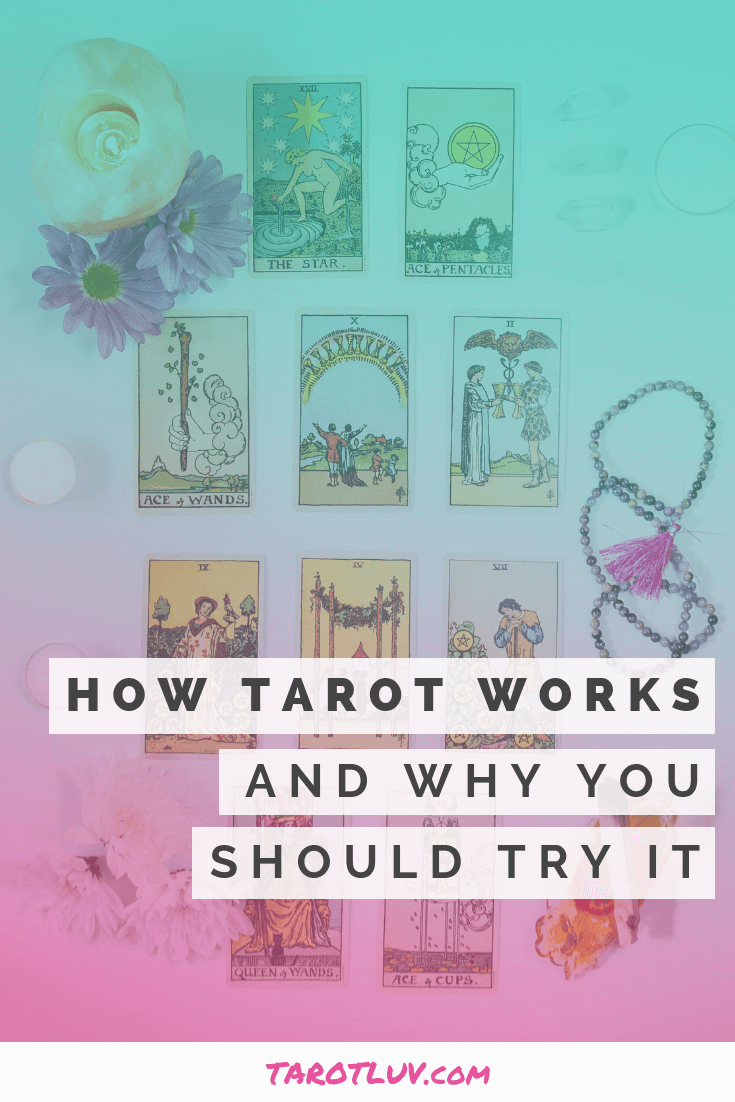
How does such a small deck of cards change the lives of so many people? If you’ve had a tarot reading before, you know it can be a powerful experience. What is it that makes these cards so accurate? Let’s examine both the mundane and magical aspects of a tarot reading.
Before getting into the how, and why, tarot cards work, let’s briefly describe what tarot is.
Tarot is a set of seventy-eight illustrated cards. The first twenty-two cards are part of what’s known as the Major Arcana, which represent overarching themes and archetypes in the querent’s (the person receiving a reading or performing a reading for themselves) life.
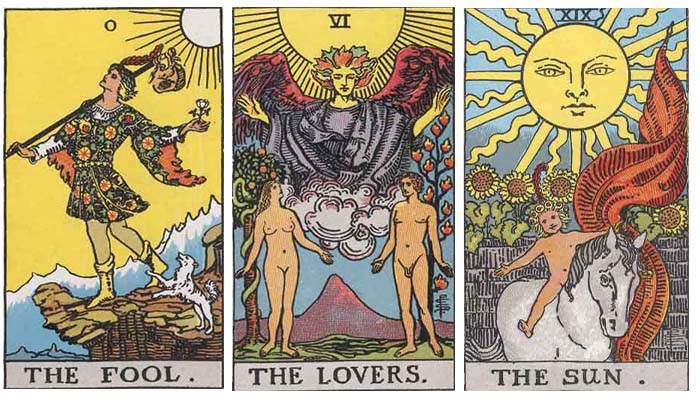
Major Arcana Examples from the Rider-Waite-Smith Tarot Deck
The rest of the cards fall within the Minor Arcana, representing more mundane, day-to-day situations.
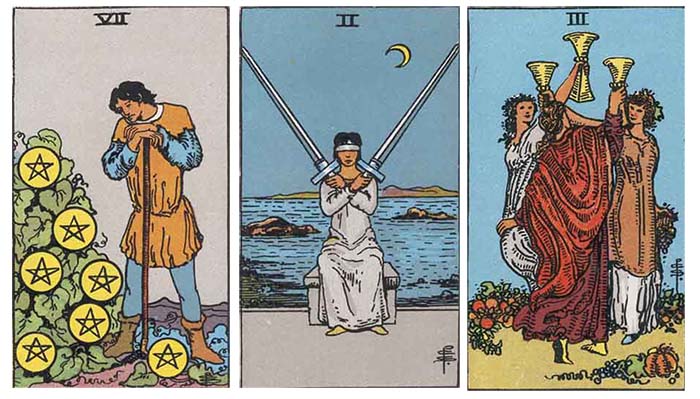
Minor Arcana Examples from the Rider-Waite-Smith Tarot Deck
The minor arcana includes the court cards (traditionally Pages, Knights, Queens, and Kings) that are often interpreted as personalities and people.
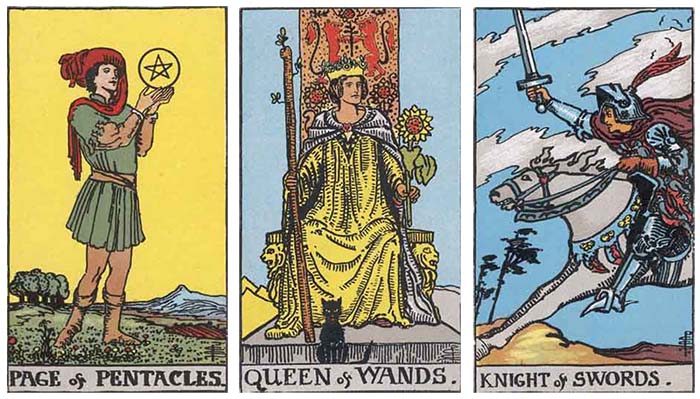
Court Card Examples from Rider-Waite-Smith Tarot Deck
When all these components are combined, they represent parts of the human experience: love, work, aspirations, creativity, relationships, emotions, family, change, difficulties, and growth. Often readers use set card positions called spreads to give additional context to the cards. Through the interpretation of these visual representations, the story of our lives is presented.
Why Tarot Works
Self-awareness and self-knowledge
Tarot often reveals facets of an issue that you weren’t consciously aware of.
This is one of the biggest reasons why tarot is a potent tool for self-awareness. Tarot illuminates aspects of our lives that we’ve turned a blind eye towards. Tarot gives us another perspective through which we can view our situation.
When you receive a tarot reading, either from a professional reader, or when reading for yourself, interpretations that are reflected back to you through the cards can provide profound insight into questions.
Gaining Clarity
Along with cultivating self-awareness, reading tarot brings clarity to a situation. Drawing tarot cards can provide a framework to see a situation with powerful precision. Tarot gives the querent added layers of perspective and meaning to a challenge. An experienced tarot reader can help you see multiple possibilities and angles to an issue.
Creativity Enhancer
Tarot can be used as a brainstorming tool for creative works. An artist might choose to use the symbols and motifs of the tarot as inspiration for paintings, drawings, and collages. Famous artists have dabbled in making their own tarot decks: Salvador Dali and Edward Gorey (satirically so).
Thanks in part to crowd-funding sites like Kickstarter and IndieGoGo, artists no longer have to go through publishing houses to get a tarot deck printed. With the relative ease of printing tarot decks, indie artists and designers are leaving their own mark on modern tarot.
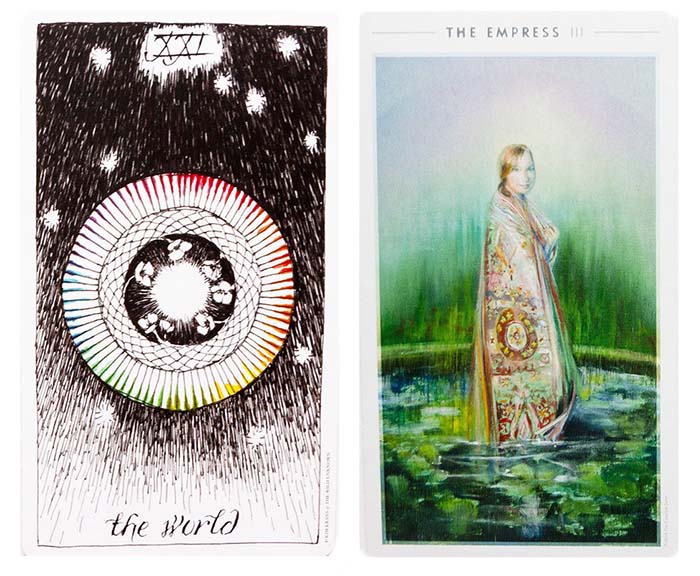
Indie Tarot Examples – Wild Unknown and Fountain Tarot
Tarot is a great tool for creative fiction as well. Writers can use tarot to map out character motivations, actions, and plot points. As mentioned earlier, tarot contains a mix of cards that represent archetypes, thematic motifs, and action-oriented cards – making it a great tool in a writer’s arsenal for creative brainstorming. In popular culture, the creator of the Mad Men television series used tarot for some of Don Draper’s plot development. Movies such as Knight of Cups and Alejandro Jodorowsky’s Holy Mountain use elements of tarot for inspiration.
Intuition Builder

Tarot for Intuition Building. Image source: Unsplash
If you’re reading tarot for yourself, tarot is a great way to strengthen your intuition. It’s especially effective for people who draw a tarot card each morning for journaling, or in the evening, to reflect on your day.
To try this, draw a card randomly from a tarot deck each day. While you’re shuffling the deck, set the intention for yourself that the card you select will be either what to expect, or a spiritual lesson, for the day.
Randomly draw a card from the deck and examine it. What is happening in the card? Does the image on the card make you feel a certain way? How do you think it could reflect an aspect of your day? Is there a spiritual lesson to be understood from the card?
Jot down your thoughts and observations in a journal so that you can come back to it later. This is a great way to start getting in touch with your intuition. Take note of any gut feelings regarding your card. This technique has the added bonus of giving you hands-on learning on how tarot card meanings apply to your life.
How Tarot Works
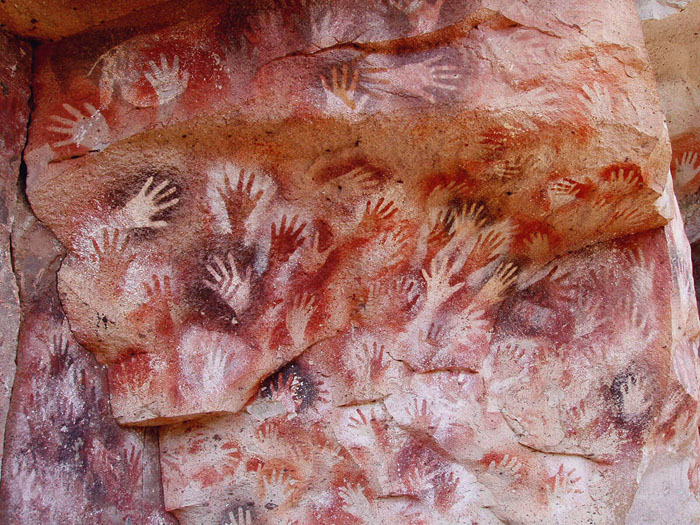
Tarot and the Collective Unconscious. Image Source: Cueva de las Manos Cave / Creative Commons
The Unconscious Made Conscious – Collective consciousness and archetypes
Across different cultures, you can find many myths and stories with strikingly similar characteristics, characters, and plots. For example, let’s look at the Hero’s Journey motif: a hero is called to an adventure that takes them out of their ordinary life. On the path of adventure, they meet mentors, allies, and enemies in a quest to resolve the disruption that caused a break from their ordinary life.
There’s usually a series of exponentially difficult challenges to be confronted until the final conflict is met. Victory over the final conflict provides resolution to the story. Think of Hercules’s trials in Greek myth or, even, the plot of just about any Marvel film (no offense meant, I’m a huge fan!). If you notice, a lot of our stories follow this basic narrative arc.
Why do we tell these reoccurring stories in our books, movies, music, and art? Psychologist, Carl Jung believed it was hard-wired in our DNA and our collective unconscious as humans to recognize and express these shared motifs, also known as archetypes.
Archetypes are universal patterns or images. Some examples from Jung’s perspective include the Hero, the Explorer, the Rebel, the Sage, the Lover, the Magician, and the Ruler. Just by the names, you can probably guess the functions and personalities of these character motifs. Archetypes can also be situations such as “The Journey” that a hero embarks on or the idea of “Good vs. Evil”.

Tarot and The Hero’s Journey. Image source: Unsplash
Archetypes are, in theory, part of the collective unconscious, not our personal subconscious formed by memories and experiences (more on that later). These are deep ancestral memories lying beneath the surface of our day-to-day consciousness.
Within the tarot’s Major Arcana are expressions of archetypes. The Empress can represent the Great Mother archetype. The Hermit is often seen as The Wise Old Man or Sage. According to Jung, the symbolism and meaning behind these images are already hardwired in our brains. They’re reflected in myths and folktales that we’ve heard since childhood and across cultures.
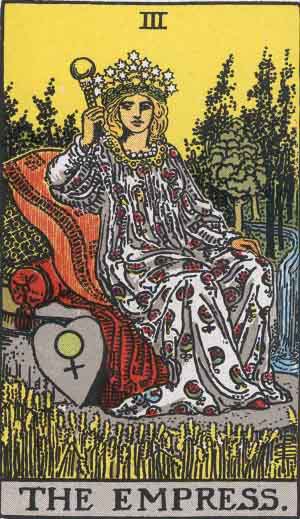
The Empress Rider Waite Smith Tarot Card
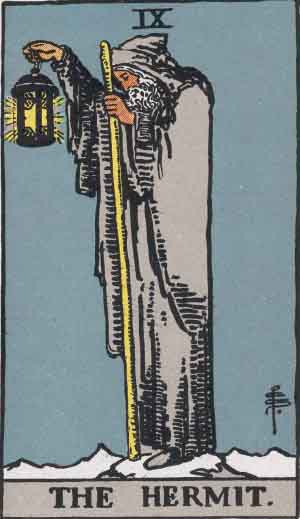
The Hermit Rider Waite Smith Tarot Card
These stories and images are part of the human experience. The imagery of tarot can be used as a way to process our experiences and dilemmas. Through the mythic metaphors we find within storytelling, we can shed light on our own challenges and aspirations.
Synchronicity
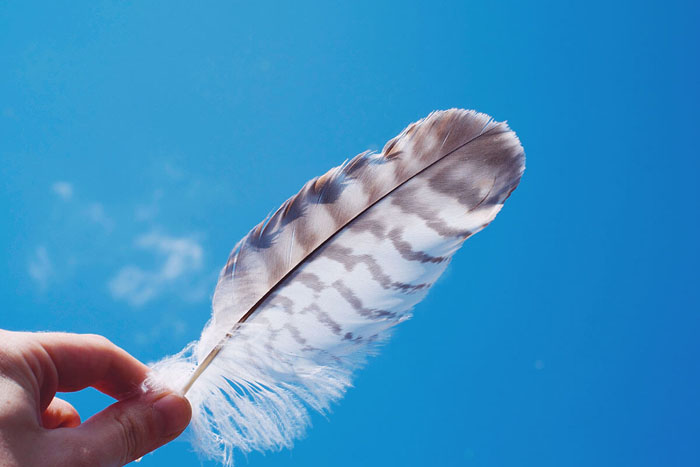
Synchronicity and Tarot. Image Source: Unsplash
Another term coined by Carl Jung, describes coincidences that, on the surface, don’t seem to be connected. However, these coincidences can be deeply meaningful to the person experiencing them. These events, or “meaningful coincidences”, are synchronicities.
Synchronicities can be odd and innocuous, such as seeing a symbol in a dream and then encountering it the next day in your waking life. It can also be very specific such as signs occurring around a significant anniversary. Often the more statistically improbable the coincidence is, the bigger the impact on the individual experiencing it.
Imagine a beloved great-grandmother who has passed on from life. Her favorite animal was the hummingbird, and she collected art related to them. Hummingbirds would be something you would associate with her memory. On the anniversary of her death, if when looking out of your window, you saw a hummingbird, you may interpret this as a sign from her that her presence is still close to you. At other times, seeing something related to hummingbirds could provide an intuitive confirmation for you to move forward on a decision… with the added bonus of having great grandma’s blessings!
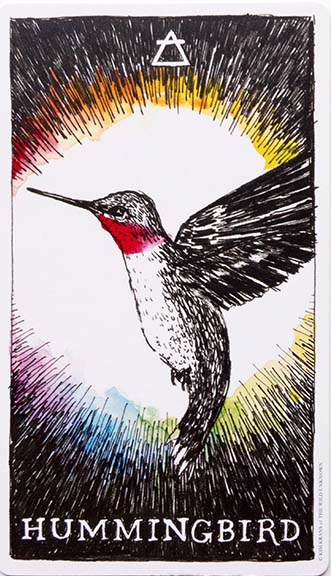
Hummingbird Card from the Wild Unknown Animal Spirit Oracle
On my Facebook, Twitter and Instagram feeds, I often post weekly tarot insights. It amazes me that out of 78 cards, I can have two of the same cards appear in two separate decks within a week of each other. It seems improbable that cards will repeat themselves so soon across different decks -but they do.
In tarot, synchronicity happens when either a meaning or a part of an image reflects a personal sign in the querent’s life. A friend of mine was preparing a reading for a querrent and pulled the Justice card —she was currently a law student. Meaningful coincidences such as these are common in a tarot reading.
The meaning or images in a card can provide confirmation of the correct course of action to take. Seeing a particular symbol or situation reflected in a card might be the special message you need to confirm a course of action.
Tarot as a reflection of the inner subconscious
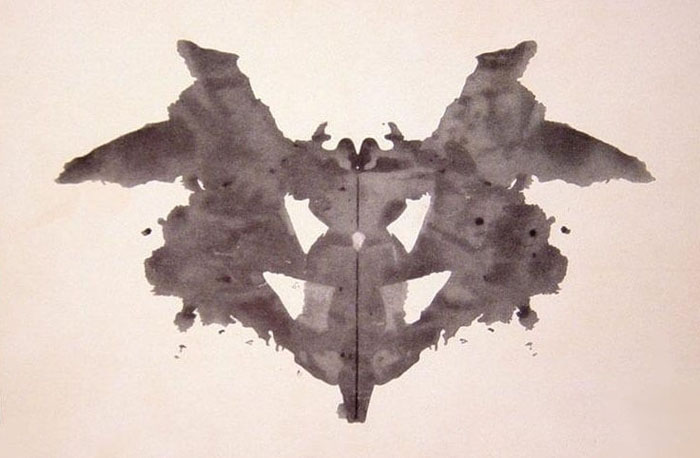
Rorschach Inkblot Test. Image Source: Creative Commons
You can probably recall seeing a scene in a movie where a psychiatrist’s patient is shown a blurry, abstract inkblot and asked to describe what they see. Those images, called Rorschach tests, in theory, tell you more about the person describing them than the inkblot themselves.
Rorschach tests operate on the idea that the person viewing them will use subconscious associations to identify the forms.
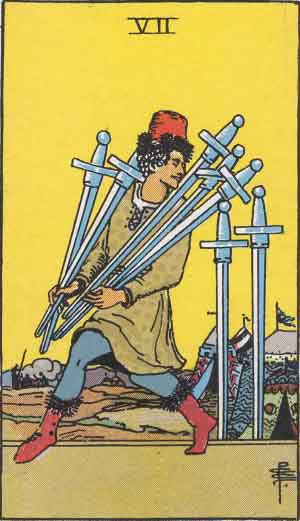
Seven of Swords – Rider Waite Smith Tarot
Most tarot decks follow a similar concept. For example, the Seven of Swords doesn’t mean a you’re a guy fleeing a circus with some sweet stolen swords in tow. Or maybe it does —I’m not judging. Beyond the literal image: what do you think is happening in that picture?
This the man stealing swords from some else?
Were those his swords and he’s stealing them back?
Or maybe they aren’t even stolen. He’s just taken his sword collection and decided to flee the circus.
Is he looking back with guilt? With fear? Or with excitement?
As you can see, the meaning attached to the card is subject to interpretation. Whatever you believe that image is portraying, how does it apply to you or your situation? It’s the room for personal interpretation that makes tarot an amazing tool for digging out whispers from your subconscious.
Projecting and Processing – a Therapist in a Box
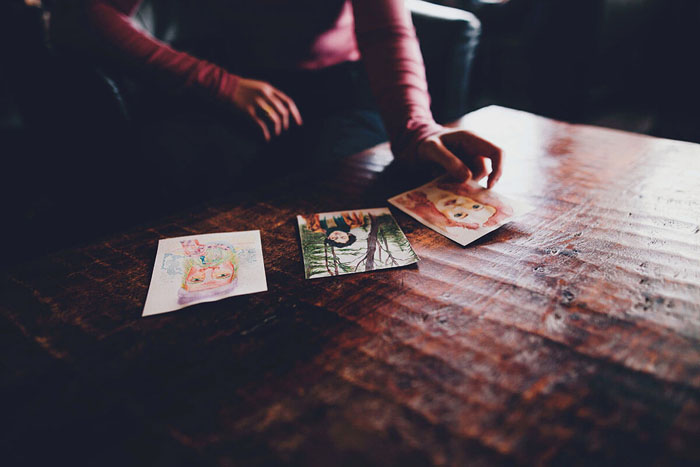
Artists and Art Therapists using Tarot and Oracle Cards. Image source: Unsplash
Along with the subconscious elements of interpreting a reading, we can also use tarot to project a personal narrative onto the card’s imagery. By identifying our own story in the cards, we can process our challenging experiences.
In college, I worked at a nonprofit providing art therapy activities for children who were living with their families in homeless shelters. Difficult emotions were able to be processed by the children using art as a focal point for discussing difficult topics. It was through the language of symbolism that these complex feelings could be discussed and a door to be opened for healing and coping.
Tarot can serve a similar function. I joke that it’s a therapist in a box! We’re able to project our own fears, desires, and experiences onto the imagery of the cards to shed light into our subconscious. If you don’t feel comfortable journaling or reading tarot for yourself, find a trustworthy reader for you to explore tarot’s potential for self-discovery with.
Intercession: the Universe at Work
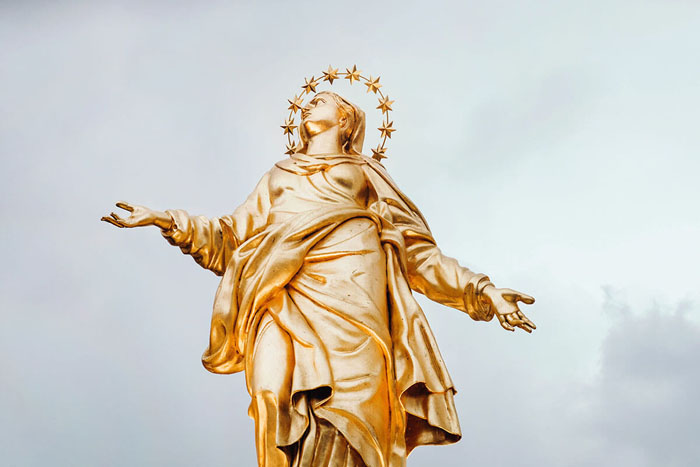
Divine Intervention. Image Source: Unsplash
Speaking metaphysically, many readers believe that the universe manifests its energy through the placement of tarot cards in a reading. This includes the idea of tarot as a bridge between the “Higher Self” or Universe (the mystical one with a capital ‘U’) and the querent. This makes tarot is a sacred tool for receiving divine guidance.
If you’ve read my FAQ page, you know that I resonate with this belief, along with the power of tarot as a representation of archetypes and the human experience. I believe there’s a guiding force that’s always directing us to the path toward our highest good —whether we choose to follow it or not. Tarot is one way that we can receive insights on what to do, and where to go, next.
Some practitioners believe that spirits guide a tarot reading. These can be benevolent forces such as angels, spirit guides, ancestors, and Spirit (with the capital “S”, maybe aka the Universe, for some). These unseen forces can be seen as intermediaries that guide the reading toward personal truth for the querent. As you can tell from the above examples of how tarot works, a belief in intervention by Spirit isn’t required for reading the tarot or having a powerful experience as a client. But, if this idea that strongly resonates with you, explore it!
Personally, I believe tarot is a potent tool for self-discovery and decision-making, regardless of the metaphysical theories behind it. My own beliefs on how tarot works aside, tarot can be used as a thoughtful conversation partner for clarity. I encourage you to give it a try with either a reading from someone you trust, or with your own deck of tarot cards.
Have more thoughts on how tarot works? How has tarot helped you? Share your thoughts in the comments section below.

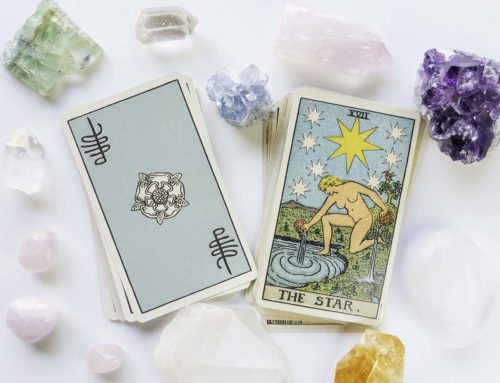
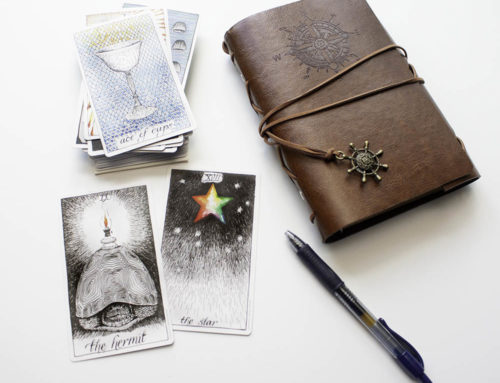
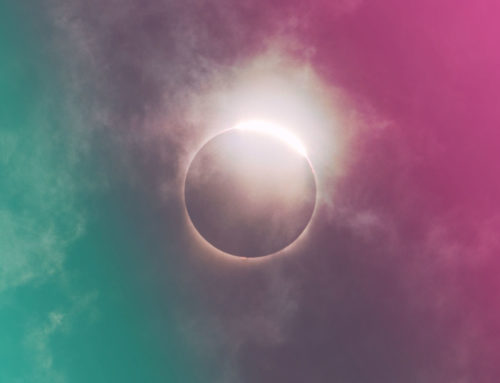
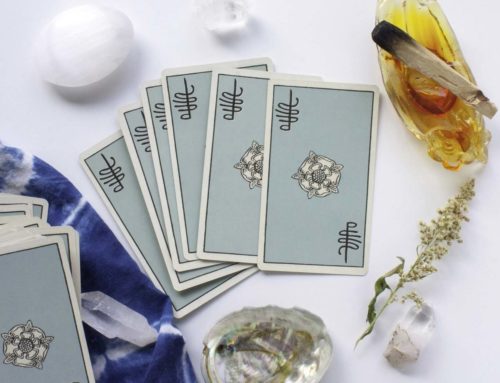
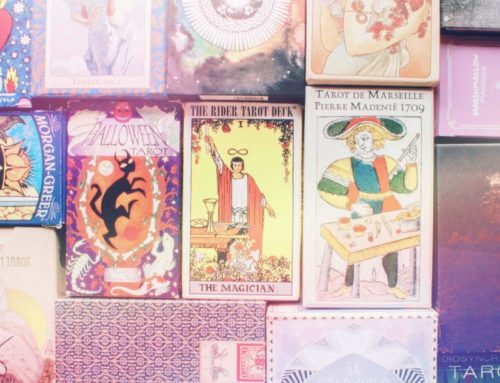
Fabulous piece on the Tarot! I run a course called Tarot for the Timid, because I find so many folk are scared witless by it, and attribute all kinds of terrible things to it. I’ll happily send people to your website – thank you for writing such a great article.
Thank you so much, Mary! I hope it helps demystify some of those tarot rumors. 😉
Fab read!! Look forward to reading more!
Thankyou for enlightenment on tarot I’ve wanted to learn for many years and tried to read books and guides which have lead to confusion but you have explained it in a way I can understand
Completely agree with this comment. Today I feel empowered to just break it down with my own gut feelings rather than reading a book that can have a million of “their” own ideas on what the card means! Great article!
My husband of 47 years passed away a few months ago. A courageous battle with cancer came to an end with hospice guiding our way. During the last month I needed support and for me, it had to be in a private setting. I turned to the tarot each day with a pressing question that weighed heavily on my heart and selected one card to help me to fully understand what was happening. There wasn’t much time for thought or trying to sort things out or even to summon the courage to face each day. The one card I chose each day was so closely attached to my question and as I held it close I was assured of the answer. The experience calmed me and opened my eyes and gave me insight into occurrences that otherwise would have gotten lost in the struggle of it all. The interpretation can vary, however, the cards that appeared for me gave me a clear message that strengthened me during this difficult time.
Mary Hykel Hunt, what a great course you offer. There are so many Timid – but want to be readers – out there. I guess I have to admit I started out that way. I thought I needed to have all the meanings to the cards before realizing that the answers are there in front of me, and I do believe that Spirit is guiding me along the way.
That’s exactly how I felt. Needing to know every single interpretation needed instead of just trying to go with my gut instinct. I was a timid reader not only for friends, but even myself. I started to overthink it too much.
This is a great explanation for anyone apprehensive about Tarot. I had a fantastic therapist who guided us through weekly sessions. We also had a great book and suggested reading, as well as her own Guideline to the explanations and spreads. We also kept notebook journaling with spread type, cards pulled, date, time and mood going into the type of reading you’ve chosen. It has been a go to whenever I need to work on me for a better part of three decades.
I didn’t know that the tarpt cards are connected, or are a part of, astrology. I’m still learning about both. Thanks for this information.
Wonderful description and explanation. I’ve been doing daily card readings for myself for years as well as readings for others, but I look forward to exploring through journaling about them which I have yet to try. Lol mostly because I’m more of a talker than a writer but excuses excuses. Thank you for this insight.